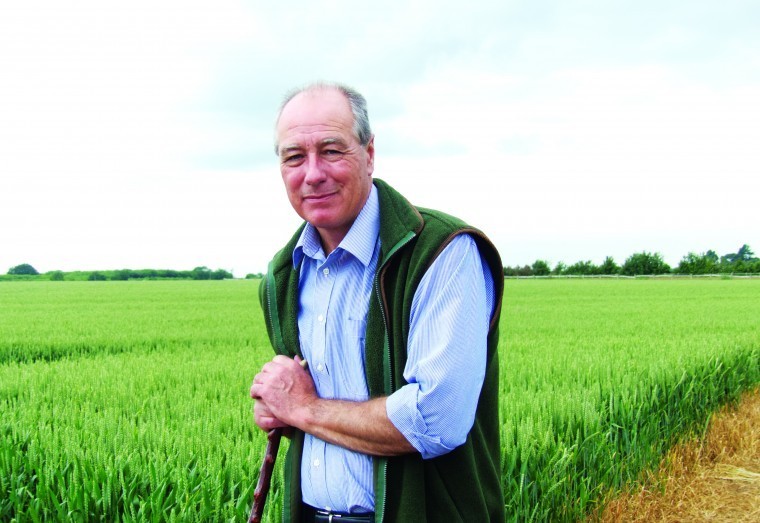The fine week of weather as I wrote the last article was followed up on 30 April with 24 hours of wind and rain from the north east totalling 60 millimetres of rain. Most of it which fell as sleet and it was a day that would have done justice to the bleak mid winter.
That was followed by record May temperatures a week later.
What did that do to our crops? Not a lot of good would be the best summary. For oilseed rape that was just coming into flower with the wind and rain I was glad we had applied growth regulator and all of it stood the battering.
Driving round north Kent, farming over the hedges, it is obvious that there is lodged oilseed rape crops with patches levelled and necked back up. The following high temperatures drove the crop to full flower in a few days.
We applied a fungicide to all oilseed rape fields based on Pictor but with no insecticide as there was little evidence of pest pressure. Flowering finished very quickly and crops look very clean but I am concerned that the depth of pod canopy is shallow in places and whether the pod and seed set adequately for good yields is open to question. We have considered Nufol applications but with concerns over crop potential and sub £300 a tonne harvest prices have decided not to bother.
Winter wheat has struggled with the weather as well. Growth stages are still all over the place and it has been a field by field or farm by farm approach throughout the spring and that continues. I suppose the best I can say is that every field has had a T0 and T1 fungicide with robust rates and mixes at T1 the order of the day. Clearly some crops had an early T0 that went on at the correct growth timing whereas others were late.
The gap between the early T0s and T1s was weather extended while the later T0 applications probably missed the correct growth stage but had a short gap to T1s. Growth regulators have been robust as mentioned previously and with the cold late spring we have definitely moderated growth.
Tillers have fallen away in response to the spring and later than ideal nitrogen timings. So looking at a number of crops they are on the thin side and that is on the good free draining soils of the North Downs. Get out into the Weald and crops have suffered more with water logged conditions and are definitely too thin.
Worse may be to come as the root structure has to have been impaired and crops will come under pressure from water deficit at some stage which I fear will show up further weaknesses and impair yield. In fairness other than a bit too much septoria in the bottom of crops, new leaves with fungicide cover are clean and I would hope we can keep them that way through to harvest. This is weather dependent, of course.
We did finally get all of the spring barley sown before the deluge at the start of May and it is up and away in quick time. It has long way to go and we have applied growth regulator to slow down apical dominance and promote tillering. Seed rates were increased and plant numbers do look adequate. All of the nitrogen has been applied and washed in. The problem is they are late crops and again at some stage stress will test these crops and without a doubt they will be late to harvest. Again weather will play apart and if it is kind yields may be forgiving.
When a friendly grain merchant commented how good crops were looking as he drove round Kent and asked whether he could look forward to an exportable surplus that was worth trading, I am afraid I was pessimistic about that. There is the story of this spring’s weather to contend with and the increased risk that considerable spring cropping brings to the table as well the land that is fallow either intentionally or by default and that all adds up to a lower harvest total. All of that applies across the country as adverse weather has not missed any part of the UK.
I also mentioned last month that we had very little black grass showing on our environmental focus area (EFA) fallow land and hoped – if not expected – it to make it through to the end of June in a non seeding condition. It even made the headline to last month’s article.
A month later and that is still the case on the upland but less so on the heavier land. Some of those fields have had to be sprayed off with glyphosate to avoid a black grass seed return. This decision had to be made before 15 May so we could redirect EFA to cover and catch crop options.
That brings me to an unfortunate point as I do not really believe in the argument around cover cropping and building soil organic matter as a way to increase arable yields. I come from a generation that went through university when research supported the view that for arable crops organic matter levels of approximately two per cent were fine and levels at four to five percent did not make much difference.
This is a contentious point to articulate as there are some excellent local farmers who are public exponents of cover cropping and direct drilling and do an excellent job, albeit they did an excellent job before becoming converts. Perhaps I will become converted in time to join Michael Gove’s broad church delivering environmental public goods, most of which he knows little about and probably cares even less.




